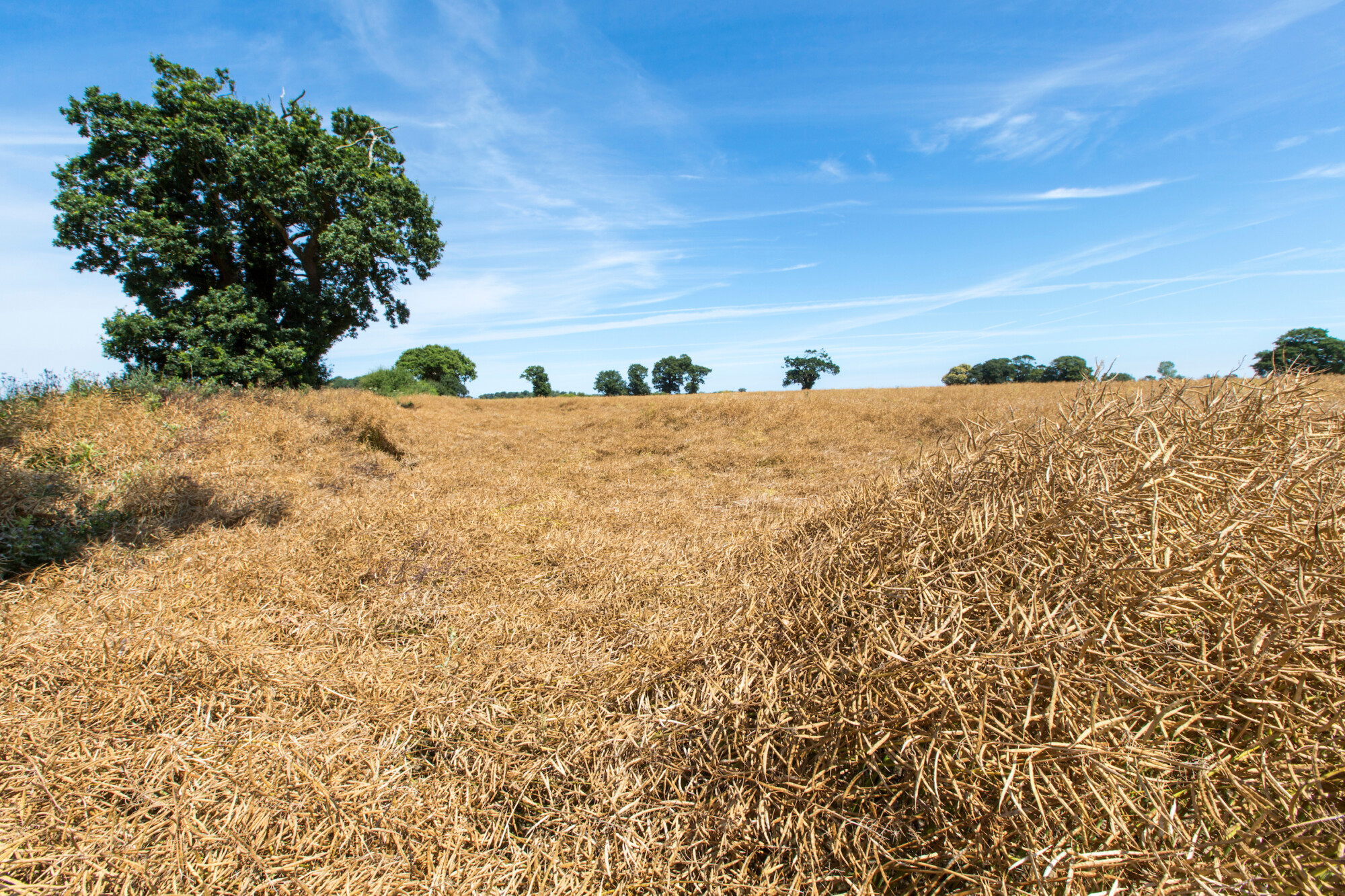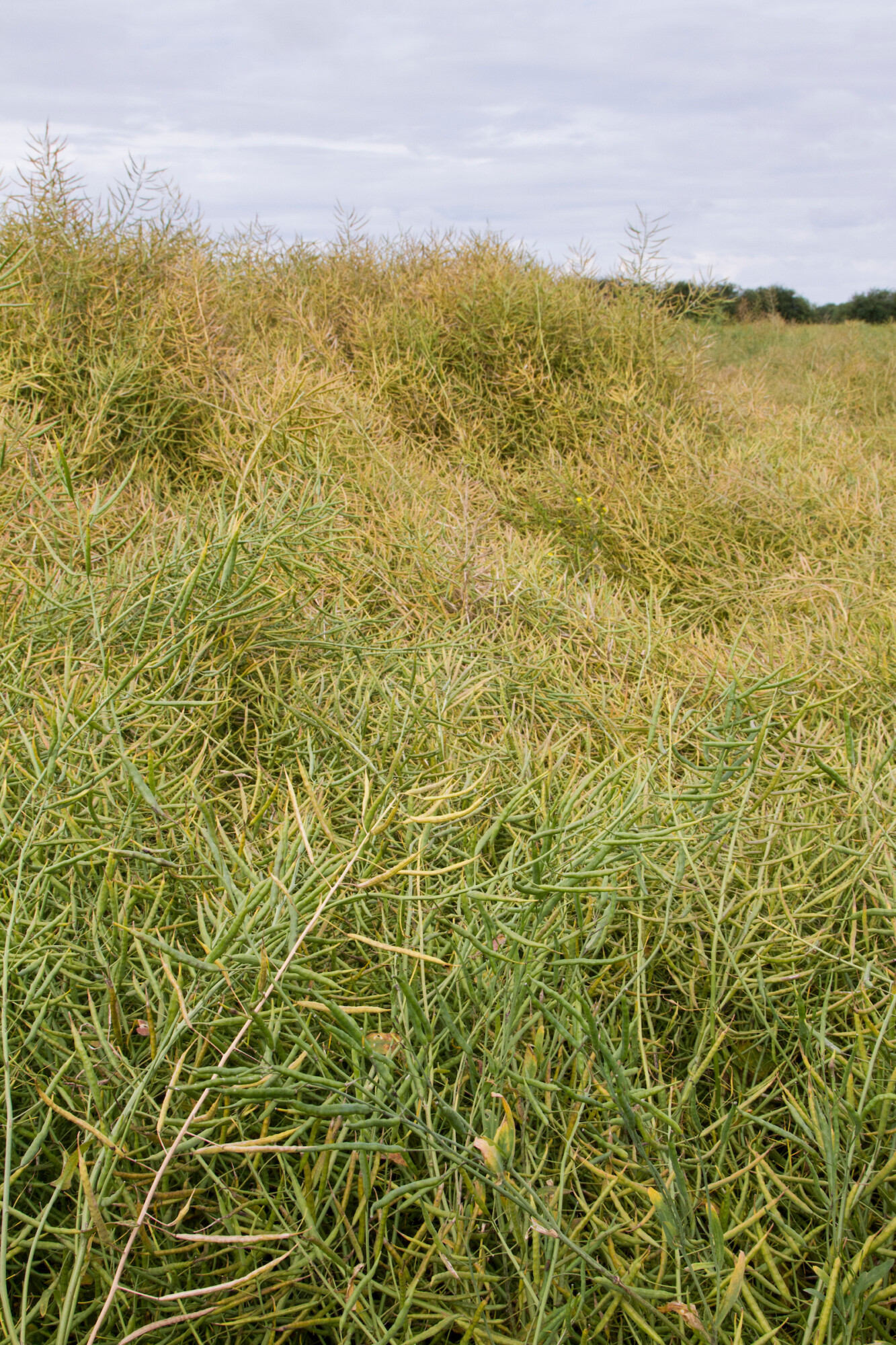7 steps for effective harvest management of oilseed rape
7th June 2021
After a cool spring with variable crop development, warm weather means we can finally start to look ahead to harvest. Managing oilseed rape ripening with glyphosate is a valuable tool to plan harvest operations and control weeds ahead of autumn.
Assess the benefits
Desiccation aids harvest planning and harvest operations. Any green material, either crops or weeds, may slow down the combine harvester.
combining. “Using glyphosate helps the combine to run better, using less fuel and less chance of stoppages,” says Bayer’s Matt Siggs.
Consistent ripening leads to fewer green pods which thresh badly and are also burden the combine and use up fuel. More fuel can be saved by combining evenly-ripened crops at the ideal time to minimise drying.
Patience is key
“Coming into summer, farmers inevitably think about harvest and are keen to start as soon as possible. Spraying oilseed rape with Roundup (glyphosate) may seem to bring harvest forward but going too early is counter-productive,” says Matt Siggs of Bayer.
Premature application sacrifices yield and oil content, increases the risk of excessive red seed and can also result in glyphosate translocating to the seeds themselves. These downsides come with no significant gain.
“Oilseed rape should’ve already begun to senesce when you spray. You cannot push the crop too far off its natural timetable without downsides.”
Use the pod test
The pod test is a fairly simple way to know if it is time to spray. To take a sample, Mr Siggs recommends going properly into the crop away from tramlines and headlines. This is a little tricky in oilseed rape but worth the effort.
“Once there, find the main yield bearing part of the plant, this is usually just below the canopy. Choose 20 pods. If in 15 of these pods, two-thirds of seed has changed from green to brown then it is safe to start spraying.”
Mr Siggs recommends that farmers err on the side of caution because there is less risk from spraying a little later compared to spraying too early.
Look beyond the statutory gap
After spraying, patience is also important. There is a 14-day statutory gap between application and harvest but check the crop before making a final decision when to harvest.
Factor in conditions when spraying
Time of day can also affect Roundup performance, if possible spray earlier in the day. “Higher humidity means the plants’ stomata are open which improves penetration and product efficacy.”
High temperatures or catchy weather can also affect product performance. Modern Roundup formulations can mitigate the dangers from bad weather with rapid penetration and good performance in extreme conditions.
Consider weed control
Applying glyphosate also control weeds as well as managing ripening. The timing is particularly helpful for perennial weed control. “At this time, the flow of assimilates within perennial weeds is toward the rhizome, meaning any applied glyphosate will also be transported to give good kill and reduce future viability of these weeds.”
The typical desiccation timing of late June is too late to prevent seed set in annual grass weeds. But completing the oilseed rape harvest on schedule means there is lots of time to manage weeds in stubbles ahead of drilling the next crop.
Pick the rate according to weed spectrum to choose rate
Use higher rates when perennial weeds needs to be controlled:
- Desiccation + perennial weeds: 1440g/ha glyphosate
- Desiccation + annual weed control: 1080 g/ha
For more information CLICK HERE


